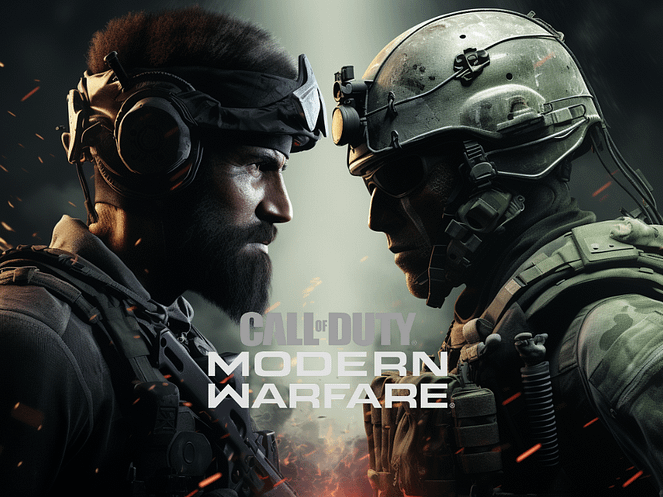
Activision’s annual gaming blockbuster, “Call of Duty: Modern Warfare II,” has returned, continuing the legacy of its well-established IW engine.
Now in its ninth iteration, the engine shows minor advancements since the onset of the current generation of consoles. Notably, the ray-traced shadows present in “Call of Duty: Black Ops Cold War” are missing in console versions, marking a step back in graphical fidelity.
The PC version, however, includes DLSS and FSR support, crucial for achieving 4K resolution at 60fps on extreme settings, even with powerful hardware like the RTX 3080.
Console Performance: A Close Match Across Platforms
The game offers two performance modes for console players: a high-resolution 60fps mode and a 120fps mode with reduced quality.
On PS5 and Xbox Series X, these modes output at a full 3840 x 2160 resolution, reconstructed from a base of 1920 x 2160, following the pattern of the previous two installments. The Xbox Series S closely mirrors this visual fidelity, albeit with some reductions in textures, alpha effects, bloom, and shadows. Its resolution targets 2560 x 1440, scaling from a 1280 x 1440 base.
60fps Mode: Stable but Unexciting for Analysts
The 60fps mode, while not particularly exciting from an analysis perspective, offers exceptional gameplay experience on both PS5 and Series X.
During demanding campaign levels, both consoles maintain a stable 60fps, even amidst intense post-processing effects, alpha, and shadow-casting lights. The adaptive V-sync likely contributes to this stability, smoothing out any dips below the 16ms frame time.
Challenges on Xbox Series S
In contrast, the Xbox Series S exhibits some struggles to maintain 60fps, particularly in graphically intense levels.
In these scenarios, performance can drop to the mid-40s to low 50s, with noticeable tearing. The console’s limitations in bandwidth and fill rate appear to be the main culprits, especially under heavy rain, bloom, lights, and action.
Campaign Critique: A Lackluster Affair
Recent reviews of Modern Warfare III’s campaign highlight its shortcomings.
Some describe it as a boring, unimaginative rehash of past glories. The game’s narrative and mission design fall flat, failing to leverage the series’ renowned gunplay and technical prowess.
High Refresh Rate: The MVP for Online Play
For online gameplay, the real game-changer is the high refresh rate, enabled in the 120Hz mode.
Here, PS5 and Xbox Series X fluctuate between 70 and 90 fps, occasionally dipping into the 60s. The Xbox Series X shows a slight performance edge, up to 12% faster in certain tests. However, this difference is often imperceptible during gameplay, thanks to the smoothness offered by Variable Refresh Rate (VRR).
The Necessity of Variable Rate Refresh
VRR proves particularly beneficial for the Xbox Series S, which struggles to maintain 60fps on some levels. By enabling VRR, the console compensates for its limitations, improving input times and overall image quality.
A Mixed Bag for Modern Warfare III
Call of Duty: Modern Warfare II showcases the advantages of 120Hz and VRR technology, especially on the Xbox Series S.
While the PS5 and Series X remain the top choices for console gaming, the Series X slightly edges out in performance. Despite the campaign’s lackluster narrative and gameplay, the game’s technical achievements, particularly in high refresh rate modes, ensure a solid, if familiar, gaming experience for fans of the franchise.
For more gaming news and updates, keep coming back to GameZone!
The post Call of Duty: Modern Warfare III Performance Breakdown: PS5, Xbox Series X, and Series S Face-Off appeared first on GameZone.





